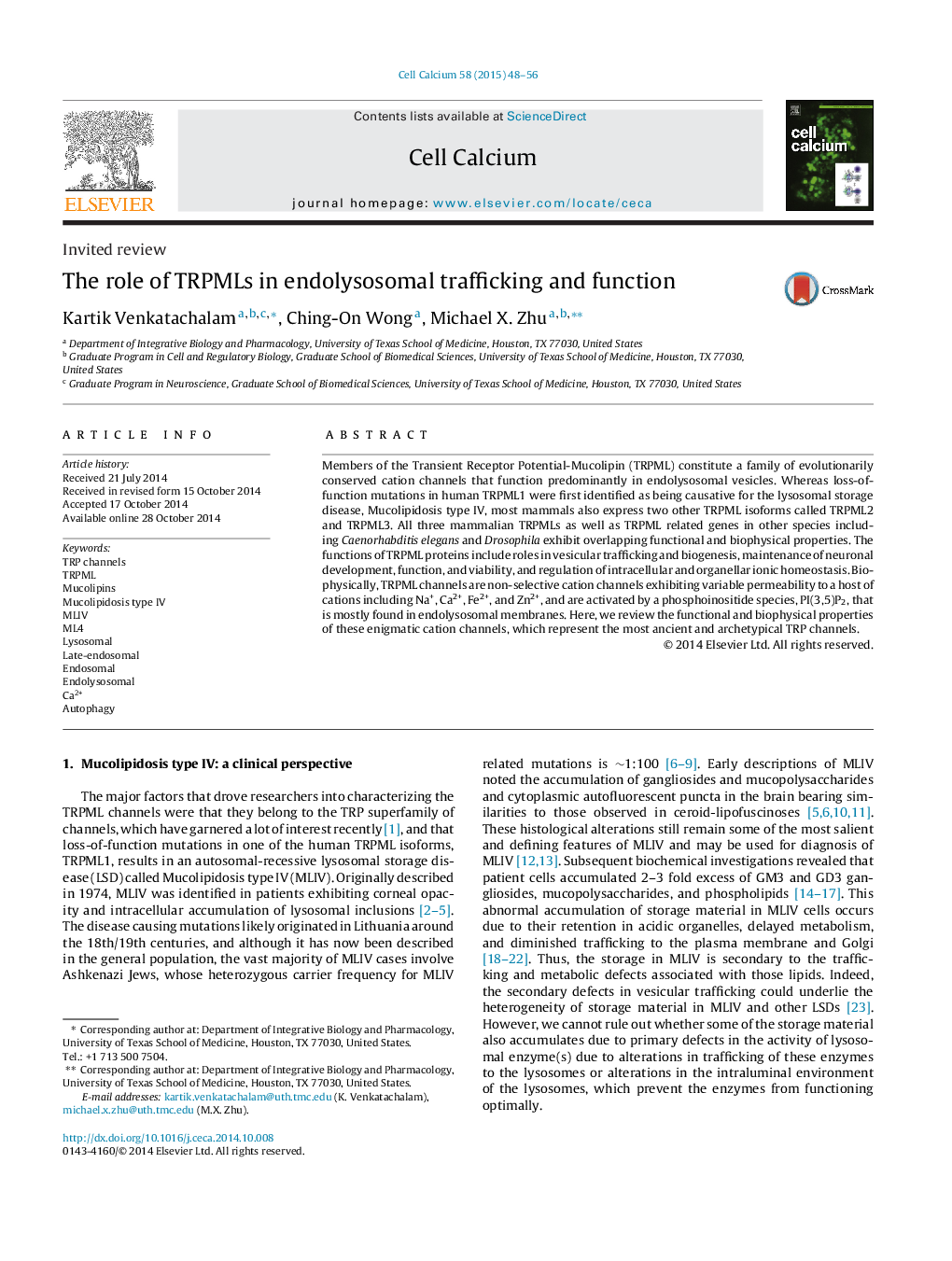| Article ID | Journal | Published Year | Pages | File Type |
|---|---|---|---|---|
| 2165906 | Cell Calcium | 2015 | 9 Pages |
•TRPMLs are evolutionarily conserved cation channels that functionin endolysosomes.•Loss-of-function mutations in human TRPML1 cause Mucolipidosis type IV.•TRPMLs are non-selective channels exhibiting permeability to Na+, Ca2+, and Fe2+.•TRPMLs are activated by PI(3,5)P2, which is abundant in endolysosomes.•TRPML regulates vesicular trafficking, neuronal survival, and ionic homeostasis.
Members of the Transient Receptor Potential-Mucolipin (TRPML) constitute a family of evolutionarily conserved cation channels that function predominantly in endolysosomal vesicles. Whereas loss-of-function mutations in human TRPML1 were first identified as being causative for the lysosomal storage disease, Mucolipidosis type IV, most mammals also express two other TRPML isoforms called TRPML2 and TRPML3. All three mammalian TRPMLs as well as TRPML related genes in other species including Caenorhabditis elegans and Drosophila exhibit overlapping functional and biophysical properties. The functions of TRPML proteins include roles in vesicular trafficking and biogenesis, maintenance of neuronal development, function, and viability, and regulation of intracellular and organellar ionic homeostasis. Biophysically, TRPML channels are non-selective cation channels exhibiting variable permeability to a host of cations including Na+, Ca2+, Fe2+, and Zn2+, and are activated by a phosphoinositide species, PI(3,5)P2, that is mostly found in endolysosomal membranes. Here, we review the functional and biophysical properties of these enigmatic cation channels, which represent the most ancient and archetypical TRP channels.
Graphical abstractFigure optionsDownload full-size imageDownload as PowerPoint slide
